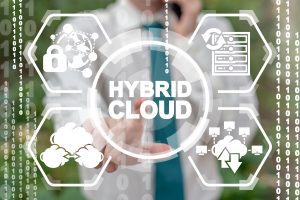Cost of Cloud: Things to Know Before Migrating

Organisations across the globe are turning to Cloud computing. It is no secret that the Cloud offers a host of benefits, as 84% of organisations positively evaluate the influence of the Cloud on their businesses. It enables organisations to expand their business while leveraging their existing infrastructure and enhancing their customer experience and security efforts. As a result, many IT leaders include this technology as a critical part of their digital transformation strategy, with investment in the Cloud expected to continue to boom in 2023.
Whilst Cloud technologies have demonstrated resilience and scalability during unprecedented times, the cost of migration is often overlooked. While the overall cost will vary depending on the scope and scale of the project, there are a number of factors that businesses need to take into account. This includes the choice of Cloud deployment model, volume of data to transfer, workload requirements and licensing costs for automation software, to name a few. What’s more, companies need to consider any hidden or unexpected costs when making the move to the Cloud, as the adoption process is not always simple. This relates to any post-migration management costs such as storage requirements, data backup and training required to upskill staff on the new technology. Therefore, budgets need to be scalable, just like the Cloud itself, in order to overcome any challenges in the migration journey.
There is more to Cloud migration than simply moving databases and virtual machines offsite. Organisations need to consider the cost before taking the plunge. The advantages of migrating an on-premise program to the Cloud are widely known, ranging from scalability, security and dependability, to simplicity of use and flexibility. How much that Cloud migration will ultimately cost is undisclosed and finding the solution is not always straightforward. When calculating costs, there are a few key factors to consider. The application’s present pre-migration expenses should be thoroughly understood before being compared to the anticipated post-migration costs. The time and effort required to move apps from on-premise to the Cloud also add to the cost of migration.
Pre-migration Costs
The existing on-premise cost and system performance information for the current application must be obtained in as much detail as possible. This will not only aid in choosing the proper Cloud infrastructure size, but it will also help determine a comparison of current on-premise expenditures versus projected Cloud costs.
The following pre-migration actions should be considered to prevent hidden expenses when adopting Cloud computing:
Create a Framework for Cloud Governance
A Cloud governance framework ensures that all organisational expenses related to the Cloud align with business objectives, support data reliability, inspire innovation, and alleviate the risks associated with the loss of data or non-compliance with protocols.
Software Licensing Cost, Support, and Management
A thorough review of all software licensing agreements is vital to ensure that the cost of current software does not increase after the entire system has been migrated to the Cloud.
Application Mapping
One of the primary strategies to optimise cost is knowing exactly what to migrate to the Cloud. Application dependency mapping is required for every application, which is time- and labour-intensive when conducted manually.
Business Cases
The true cost of a Cloud migration will depend on factors more strategic than just the technical expenses. Cost optimisation is traditionally one of the biggest benefits of migration. However, time to market, agility or scalability is often a more important business case than cost reduction as organisations occasionally claim that they haven’t saved as much as anticipated.
Application Refactoring
Not all selected applications can simply be moved to the Cloud; instead, extensive planning is needed to ensure businesses are prepared for the Cloud. Most applications require refactoring, which is a time-consuming, labour-intensive operation that demands knowledge and experience if conducted manually. These additional expenses only increase with the number of applications.
Data Transfer
When new Cloud users receive their first monthly bill, data transfer fees are frequently a significant surprise. Data entry into the Cloud is typically cost-free. Transferring it out, however, is another story.
Migration Costs
It’s no secret that planning, maintaining, and executing the transition to the Cloud requires a lot of time and effort. In fact, 66% of organisations admit that managing this process is the most challenging obstacle to overcome when navigating towards the Cloud. Additionally, to get the benefits and overcome the challenges, organisations need to be open to experimentation and learning.
The following migration actions should be considered to prevent hidden expenses when adopting Cloud computing:
Manual Migration or Scripting
The need for using specialised scripts throughout the refactoring process might be time-consuming for a single application and can increase tremendously with every subsequent application. Once more, the time and manpower required will result in rising expenditures that are hard to predict before commencing.
Scripting errors can be easily overlooked and not be discovered until the testing and validation stage. This entails retracing the migration and taking extra time to identify the scripting mistake, fix it, and then continue with the migration process.
Whilst it’s important for businesses to consider automating the migration to the Cloud, to ensure the process is repeatable and testable, thus avoiding any hidden costs of something going wrong during the manual process, scripting costs a significant amount of money. Therefore, in certain areas that are extremely difficult to automate, manual migration can be justified.
Over or Under Provisioning
The process of matching instances with workloads is multifaceted. Organisations could under or over-provision the workload instance size, which can result in preventable additional expenses and inadequate operation of the workload.
Deduplication of Data
Organisations pay for the storage they use. Data deduplication allows for greater network bandwidth and storage device utilisation. Implementing the deduplication of data will reduce costs on both storage usage and data transfers.
Post-Migration Costs
The following post-migration actions should be considered to prevent hidden expenses when adopting Cloud computing:
Cutover & Testing
The cutover and testing stage may involve hidden expenses that stem from a variety of time-related factors. A poorly timed procedure can hurt corporate productivity, which has substantial financial repercussions. Additionally, it can reveal issues with applications that aren’t functioning properly. Both require specialised knowledge and staff time, which ultimately lengthens the migration process and raises the total cost.
Optimization
Applications and workloads are constantly changing and expanding as the organisation does. To guarantee that applications continue to run at their optimal efficiency in the face of these changes, constant optimisation is necessary. Applications may stop functioning if optimisation is absent or performed incorrectly, which would cause the organisation’s operations to cease. It won’t be evident how much it will cost until it’s over, but the longer it takes to fix, the more it will cost.
Decommission Cloud Services
One of the main benefits of on-demand, pay-as-you-go Cloud computing is quick and simple resource provisioning. But there is a price to pay for convenience. Cloud instances can be easily set up, but it’s just as easy to forget about them. Thus, businesses must keep track of every instance. In this manner, unused equipment can be located, turned off, and extra expenses can be avoided.
Challenges related to managing migration complexities are followed by issues related to getting the right people with a good mindset and aptitude. The right skills are necessary for the migration to deliver the expected benefits, without them, the project may be completely hopeless. Cloud computing is a technology that can aid organisations to maximize their potential in adequate conditions. Therefore, for many organisations, the greatest benefit of Cloud solutions is the simple and agile scalability of services.
Given that the hybrid approach has established the de facto benchmark for business agility, the discussion over cloud computing vs. data centres is now a proposition for the majority of enterprises. The public cloud will continue to be a pillar of the hybrid architecture even though it may not be appropriate for all organisations. Both large and small businesses can develop a Cloud strategy that works for them now as well as in the future while lowering costs as promised and anticipated.
